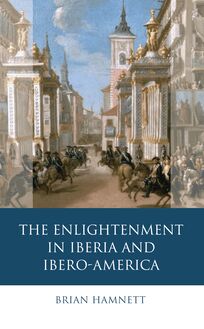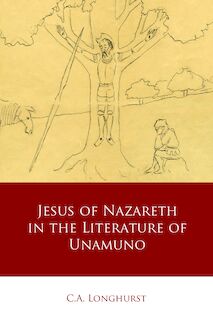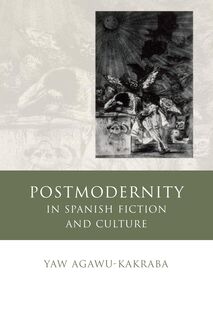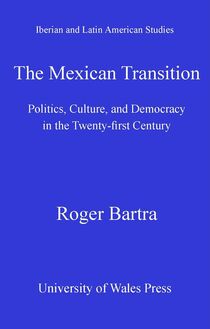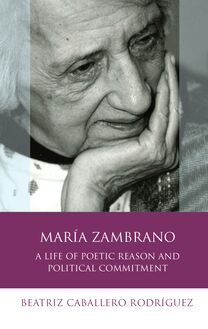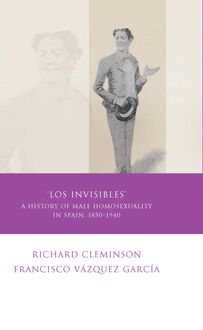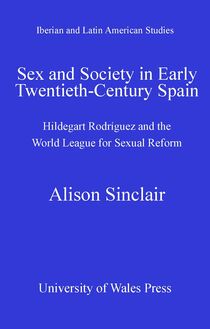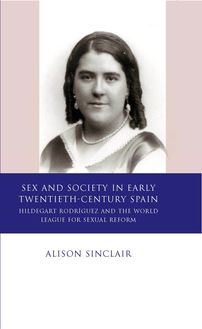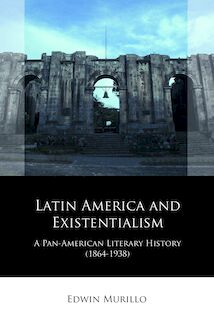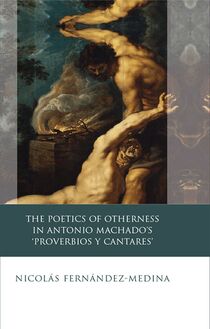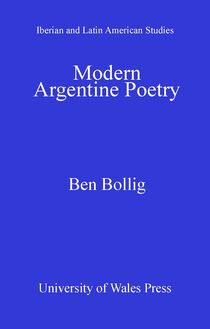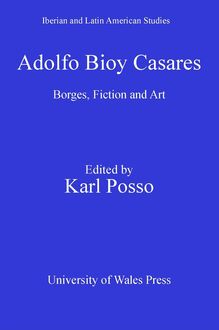-
 Univers
Univers
-
 Ebooks
Ebooks
-
 Livres audio
Livres audio
-
 Presse
Presse
-
 Podcasts
Podcasts
-
 BD
BD
-
 Documents
Documents
-
- Cours
- Révisions
- Ressources pédagogiques
- Sciences de l’éducation
- Manuels scolaires
- Langues
- Travaux de classe
- Annales de BEP
- Etudes supérieures
- Maternelle et primaire
- Fiches de lecture
- Orientation scolaire
- Méthodologie
- Corrigés de devoir
- Annales d’examens et concours
- Annales du bac
- Annales du brevet
- Rapports de stage
La lecture à portée de main
Vous pourrez modifier la taille du texte de cet ouvrage
Découvre YouScribe en t'inscrivant gratuitement
Je m'inscrisDécouvre YouScribe en t'inscrivant gratuitement
Je m'inscrisEn savoir plus
Vous pourrez modifier la taille du texte de cet ouvrage
En savoir plus

Description
In a world increasingly dominated by visual sensation, our understanding of the role and influence of comics and cartoon humor in popular culture has become essential. This book offers a critical and cognitive focus that captures the changing fortunes of Catalan humour production against the shifting political landscape in the period 1898–1982. It considers how Catalan satire has been influenced by periods of relative calm as well as censorship, violence, war and dictatorship, and among its key features is its presentation of a continued cartooning tradition that was not ended by the installation of the Franco dictatorship, but which rather continued in a number of adapted forms, playing its own role in the evolution of the period. Thus, as well as introducing the most representative cartoonists and publications, the Catalan example is used to explore broader aspects of this complex communication form, opening new avenues for cultural, historical and socio-political research.
Introduction
The Nature of Humour: Some Theoretical and Definitional Guidance
The Catalan Context
Directions
Notes
Chapter One: The Golden Age of Catalan Political Cartoons (1898-1931)
The Pre-Twentieth-Century Catalan Satirical Tradition
The Legacy of 1898 and the fets de Cu-Cut!
The fets de Cu-Cut!
The Vilification of Alejandro Lerroux
In Search of the Funny-side of the Setmana Tràgica
Papitu
Satire and Censorship
The Rise of Syndicalism and the Primo de Rivera Dictatorship
Chapter One Images: Figures 2.1 to 2.9
Notes
Chapter Two: Catalan Cartoon Humour and ‘Otherness’ in the Second Republic and Civil War (1931–1939)
The Second Republic and the Catalan Statute of Autonomy
The Second Republic and the Satirical Press
El Be Negre
Gutiérrez and the 1932 Statute of Autonomy
The fets d’octubre and the bienni negre
The Fall of Lerroux
The Spanish Civil War and the Framing of ‘Otherness’
The Sindicat de Dibuixants Professionals
Chapter Two Images: Figures 2.1 to 2.12
Notes
Chapter Three: Humour Under Franco Part I: Continuing a tradition (1939–1962)
The Post-war Period at Home
The 1938 Press Law
The Church and the Humour Press
Humour in the Clandestine Press
La Bruguera and TBO
Children’s Comics
The Challenge Facing Cultural Production in Exile
Tísner in Exile
Chapter Four Images: Figures 3.1 to 3.9
Notes
Chapter Four: Humour Under Franco Part II: From Fraga to freedom (?) (1962–1975)
Comics and the Revival of the Catalan-Language Press
Bruguera and the DER
The Ley Fraga
The Application of Censorship
Humour in the Press
Censorship: A case study
Chapter Four Images: Figures 4.1 to 4.6
Notes
Chapter Five: Humour and the Transition to Democracy (1975–1982)
Humour Publications of the Transition
The El Papus Bombings
Solidaridad con El Papus
The 1978 Constitution
The Catalan Statute of Autonomy
Reception of the Statute in the Press
The ‘Tejerazo’ of 1981
Reactions to the Tejerazo in the Satirical Press
The ‘End’ of the Transition: PSOE electoral victory 1982
Chapter Five Images: Figures 5.1 to 5.8
Notes
Conclusion
Sujets
Informations
| Publié par | University of Wales Press |
| Date de parution | 15 février 2016 |
| Nombre de lectures | 0 |
| EAN13 | 9781783168064 |
| Langue | English |
| Poids de l'ouvrage | 5 Mo |
Informations légales : prix de location à la page 0,1500€. Cette information est donnée uniquement à titre indicatif conformément à la législation en vigueur.
Extrait
Series Editors
Professor David George (Swansea University) Professor Paul Garner (University of Leeds)
Editorial Board
David Frier (University of Leeds) Lisa Shaw (University of Liverpool) Gareth Walters (Swansea University) Rob Stone (University of Birmingham) David Gies (University of Virginia) Catherine Davies (University of London) Richard Cleminson (University of Leeds) Duncan Wheeler (University of Leeds) Jo Labanyi (New York University) Roger Bartra (Universidad Nacional Autónoma de México)
Other titles in the series
The Mexican Transition: Politics, Culture and Democracy in the Twenty-first Century Roger Bartra
Adolfo Bioy Casares: Borges, Fiction and Art Karl Posso
Barcelona: Visual Culture, Space and Power Helena Buffery & Carlota Caulfield
From Silver Screen to Spanish Stage: The Humorists of the Madrid Vanguardia and Hollywood Film Stuart Nishan Green
Modern Argentine Poetry: Exile, Displacement, Migration Ben Bollig
Catalonia: National Identity and Cultural Policy Kathryn Crameri
Melancholy and Culture: Diseases of the Soul in Golden Age Spain Roger Bartra
The Poetics of Otherness in Antonio Machado’s ‘Proverbios y Cantares’ Nicolas Fernandez-Medina
IBERIAN AND LATIN AMERICAN STUDIES
Catalan Cartoons
A Cultural and Political History
RHIANNON McGLADE
© Rhiannon McGlade, 2016
All rights reserved. No part of this book may be reproduced in any material form (including photocopying or storing it in any medium by electronic means and whether or not transiently or incidentally to some other use of this publication) without the written permission of the copyright owner except in accordance with the provisions of the Copyright, Designs and Patents Act 1988. Applications for the copyright owner’s written permission to reproduce any part of this publication should be addressed to The University of Wales Press, 10 Columbus Walk, Brigantine Place, Cardiff CF10 4UP.
www.uwp.co.uk
British Library CIP
A catalogue record for this book is available from the British Library.
ISBN 978-1-78316-804-0 e-ISBN 978-1-78316-806-4
The right of the Rhiannon McGlade to be identified as author of this work has been asserted in accordance with sections 77, 78 and 79 of the Copyright, Designs and Patents Act 1988.
Published with the support of The Centre for Catalan Studies, Queen Mary University of London, and Institut Ramon Llull
Cover image taken from Per Catalunya (May 1946), attrib. ‘Xiu Xiu’.
Contents
Series Editors’ Foreword
List of Illustrations
List of Abbreviations
Acknowledgements
Introduction
1 The Golden Age of Catalan Political Cartoons (1898–1931)
2 Catalan Cartoon Humour and ‘Otherness’ in the Second Republic and Civil War (1931–1939)
3 Humour under Franco, Part I: Continuing a Tradition (1939–1962)
4 Humour under Franco, Part II: From Fraga to Freedom (?) (1962–1975)
5 Humour and the Transition to Democracy (1975–1982)
Conclusion
Bibliography
Series Editors’ Foreword
Over recent decades the traditional ‘languages and literatures’ model in Spanish departments in universities in the United Kingdom has been superseded by a contextual, interdisciplinary and ‘area studies’ approach to the study of the culture, history, society and politics of the Hispanic and Lusophone worlds – categories that extend far beyond the confines of the Iberian Peninsula, not only in Latin America but also to Spanish-speaking and Lusophone Africa.
In response to these dynamic trends in research priorities and curriculum development, this series is designed to present both disciplinary and interdisciplinary research within the general field of Iberian and Latin American Studies, particularly studies that explore all aspects of Cultural Production (inter alia literature, film, music, dance, sport) in Spanish, Portuguese, Basque, Catalan, Galician and indigenous languages of Latin America. The series also aims to publish research in the History and Politics of the Hispanic and Lusophone worlds, at the level of both the region and the nation-state, as well as on Cultural Studies that explore the shifting terrains of gender, sexual, racial and postcolonial identities in those same regions.
List of Illustrations
Figures Figure 1.1 ‘La pau’, La Campana de Gràcia , 20 August 1898, p. 1 (Moliné). © Ateneu Barcelonès; Biblioteca de Catalunya Figure 1.2 ‘Als banys’, Cu-Cut! , 10 August 1905, p. 5 (censored [Junceda]). © Ateneu Barcelonès; Biblioteca de Catalunya Figure 1.3 ‘Al Frontón Condal’, Cu-Cut! , 23 November 1905, p. 4 (censored [Junceda]). © Ateneu Barcelonès; Biblioteca de Catalunya Figure 1.4 ‘Passió, mort y res …’, L’Esquella de la Torratxa , 22 March 1907, p. 4 (unattributed). © Ateneu Barcelonès; Biblioteca de Catalunya; Col·lecció Particular Joan Matabosch Figure 1.5 Cu-Cut! , 17 September 1908, back cover (Cornet). © Ateneu Barcelonès; Biblioteca de Catalunya Figure 1.6 ‘La baixa dels valors, especialment del valor civic catalanista’, Papitu , 15 June 1910, back cover (Apa). © Ateneu Barcelonès; Biblioteca de Catalunya; Col·lecció Particular Joan Matabosch Figure 1.7 ‘Del dia’, La Campana de Gràcia 3 August 1909, p. 1 (unattributed). © Ateneu Barcelonès; Biblioteca de Catalunya Figure 1.8 Papitu , 4 August 1909, p. 3 (Humbert). © Ateneu Barcelonès; Biblioteca de Catalunya; Col·lecció Particular Joan Matabosch Figure 1.9 Cu-Cut! , 5 August 1909, p. 5 (Junceda). © Ateneu Barcelonès; Biblioteca de Catalunya Figure 1.10 ‘Tot sopant’, L’Esquella de la Torratxa , 6 August 1909, p. 3 (Apa). © Ateneu Barcelonès; Biblioteca de Catalunya Figure 1.11 ‘La censura den lacierva’, Cu-Cut! , 5 August 1909, p. 1 (unattributed). © Ateneu Barcelonès; Biblioteca de Catalunya Figure 1.12 ‘Llegint la bona premsa’, La Campana de Gràcia , 1 May 1926, p. 3 (unattributed). © Ateneu Barcelonès; Biblioteca de Catalunya Figure 2.1 ‘La guerra de caricaturas’, Gutiérrez , 21 May 1932, pp. 10–11 (various) Figure 2.1.1 ‘El Correo de Cataluña’ [The Catalan Race/News] (Opisso) Figure 2.1.2 ‘Por Variar’ (Palestra) Figure 2.1.3 ‘El vestido nuevo del estatuto’ (unattributed) Figure 2.1.4 ‘La Mascarada de este año’ (unattributed) Figure 2.1.5 ‘La voluntad unánime de un pueblo ...’ (Opisso) 78 Figure 2.1.6 ‘Los enemigos de Cataluña’ (Picarol) Figure 2.1.7 ‘Los Royo, Libertad i CIA’ (unattributed) Figure 2.1.8 (unattributed) Figure 2.1.9 ‘Frente a la “casa de los gatos”’ (unattributed) Figure 2.2 Papitu , 10 October 1934, p. 6 (Sabatés). © Ateneu Barcelonès; Biblioteca de Catalunya Figure 2.3 L’Esquella de la Torratxa , 13 December 1935, p. 1 (Tísner). © Ateneu Barcelonès; Biblioteca de Catalunya/Artís Gener family estate Figure 2.4 L’Esquella de la Torratxa , 13 December 1935, p. 7 (Escobar). © Ateneu Barcelonès; Biblioteca de Catalunya Figure 2.5 ‘La falla d’enguany’, L’Esquella de la Torratxa , 20 March 1936, pp. 8–9 (Tísner). © Ateneu Barcelonès; Biblioteca de Catalunya/Artís Gener family estate Figure 2.6 ‘Inicials’, L’Esquella de la Torratxa , 14 August 1936, p. 7 (Tísner). © Ateneu Barcelonès; Biblioteca de Catalunya/Artís Gener family estate Figure 2.7 ‘Sota el signe de la creu’, L’Esquella de la Torratxa , 21 August 1936, p. 1 (Tísner). © Ateneu Barcelonès; Biblioteca de Catalunya/Artís Gener family estate Figure 2.8 ‘El feixisme espanyol’, L’Esquella de la Torratxa , 18 September 1936, p. 11 (Escobar). © Ateneu Barcelonès; Biblioteca de Catalunya/Artís Gener family estate Figure 2.9 ‘Queipo de Llano’, L’Esquella de la Torratxa , 10 October 1936, p. 16 (Nel·lo). © Ateneu Barcelonès; Biblioteca de Catalunya/Nel·lo family estate Figure 2.10 ‘Consignes faccioses’, L’Esquella de la Torratxa , 5 March 1937, p. 10 (Goñi). © Ateneu Barcelonès; Biblioteca de Catalunya Figure 2.11 L’Esquella de la Torratxa , 8 May 1937, p. 3 (Tísner). © Ateneu Barcelonès; Biblioteca de Catalunya/Artís Gener family estate Figure 2.12 L’Esquella de la Torratxa , 21 May 1937, p. 12 (Micael). © Ateneu Barcelonès; Biblioteca de Catalunya Figure 3.1 Endavant , 15 January 1946, p. 1 (Mondragón) Figure 3.2 Per Catalunya , 22, 31 May 1946, p. 6 (‘Xiu Xiu’) Figure 3.3 ‘Carpanta: Cerrado’, Pulgarcito , 155, c. May 1950, p. 8 (Escobar). © Ediciones B/Escobar family estate Figure 3.4 ‘Doña Urraca’ (untitled), Pulgarcito , 248, c. December 1951, p. 12 (Jorge). © Bernet family estate Figure 3.5 ‘Carpanta’ (untitled), Pulgarcito , 1319, c. July 1956, p. 14 (Escobar). © Ediciones B/Escobar family estate Figure 3.6 ‘Doña Urraca’ (untitled), Pulgarcito , 1405, 7 April 1958, back page (Jorge). © Bernet family estate Figure 3.7 ‘Preocupació’, Nova Era , 1, November 1944, p. 3 (Tísner). © Artís Gener family estate Figure 3.8 ‘El Pla de la Calma’, La Nostra Revista , 6, 15 June 1946, p. 226 (Tísner). © Artís Gener family estate Figure 3.9 Nova Era , 3, January–February 1945, p. 1 (Tísner). © Artís Gener family estate Figure 4.1 Diario de Barcelona (1959), Cesc (censored). © Biblioteca de Catalunya, Barcelona/Vila family estate Figure 4.2 Diario de Barcelona (19 October 1954), Cesc, (censored). © Biblioteca de Catalunya, Barcelona/Vila family estate Figure 4.3 Diario de Barcelona (n.d.), Cesc (censored). © Biblioteca de Catalunya, Barcelona/Vila family estate Figure 4.4 Correo Catalan (n.d.), Cesc, (censored). © Biblioteca de Catalunya, Barcelona/Vila family estate Figure 4.5 Serra d’Or (September, 1966), Cesc. © Vila family estate Figure 4.6 (1967), Cesc (censored). © Biblioteca de Catalunya, Barcelona/Vila family estate Figure 5.1 Solidaridad con el Papus , 1977, p. 47 (Óscar) Figure 5.2 Solidaridad con el Papus , 1977, p. 59 (Cesc). © Vila family estate Figure 5.3 Avui , 21 April 1979, p. 1 (Cesc). © Vila family estate Figure 5.4 Avui , 23 October 1979, p. 1 (Cesc). © Vila family estate Figures 5.5 Avui , 30 May 1979, p. 1 (Cesc). © Vila family estate Figure 5.6 El Cuervo , 13, 1977 (Ramón) Figure 5.7 El Jueves , 4 March 1981, p. 1 (unattributed) Figure 5.8 El Papus , 4 March 1981, p. 1 (Ja)
All images are the property of the cited artists or their desc
-
 Univers
Univers
-
 Ebooks
Ebooks
-
 Livres audio
Livres audio
-
 Presse
Presse
-
 Podcasts
Podcasts
-
 BD
BD
-
 Documents
Documents
-
Jeunesse
-
Littérature
-
Ressources professionnelles
-
Santé et bien-être
-
Savoirs
-
Education
-
Loisirs et hobbies
-
Art, musique et cinéma
-
Actualité et débat de société
-
Jeunesse
-
Littérature
-
Ressources professionnelles
-
Santé et bien-être
-
Savoirs
-
Education
-
Loisirs et hobbies
-
Art, musique et cinéma
-
Actualité et débat de société
-
Actualités
-
Lifestyle
-
Presse jeunesse
-
Presse professionnelle
-
Pratique
-
Presse sportive
-
Presse internationale
-
Culture & Médias
-
Action et Aventures
-
Science-fiction et Fantasy
-
Société
-
Jeunesse
-
Littérature
-
Ressources professionnelles
-
Santé et bien-être
-
Savoirs
-
Education
-
Loisirs et hobbies
-
Art, musique et cinéma
-
Actualité et débat de société
- Cours
- Révisions
- Ressources pédagogiques
- Sciences de l’éducation
- Manuels scolaires
- Langues
- Travaux de classe
- Annales de BEP
- Etudes supérieures
- Maternelle et primaire
- Fiches de lecture
- Orientation scolaire
- Méthodologie
- Corrigés de devoir
- Annales d’examens et concours
- Annales du bac
- Annales du brevet
- Rapports de stage
